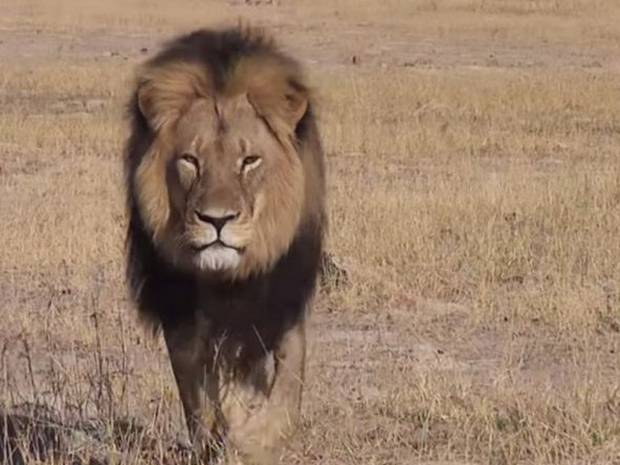The Hunter Becomes the Hunted After Cecil the Lion Killed
A hunter allegedly shot one of Africa’s most famous lions with a bow and arrow, then tracked it for two days while it was bleeding to death before finishing it off with a gun.
The hunters stalked the wounded and suffering lion for 40 hours before shooting him dead with a rifle, skinning him, and cutting off his head as a “trophy”.
Now a manhunt is on for the cat-killer who authorities say is a recreational hunter from Spain who paid €50,000 – which would be about $55,000 in American cash – for the opportunity to stalk and kill the iconic lion.
“Cecil’s death is a tragedy, not only because he was a symbol of Zimbabwe but because now we have to give up for dead his six cubs, as a new male won’t allow them to live so as to encourage Cecil’s three females to mate, “said the head of the Zimbabwe Conservation Task Force, a non-profit charity focused on the conservation and preservation of wildlife in Zimbabwe”.
The ZPHGA claims that the hunt took place on a private safari and was, therefore, not illegal; however, because Cecil lived on the Hwange reserve, the government insists that he was under its protection. Sport hunters in the safari areas surrounding the park killed 72% of tagged adult males from the study area. Animals that reside in Hwange national park are protected by Zimbabwe law.
Police are seeking the lion’s remains among the country’s taxidermists.
Cecil’s headless body was found outside the town of Hwange. “From 2007 to 2012 Spain was the country that imported the most lion trophies from South Africa. Europe needs to ban these lion hunting trophies altogether”, said Luis Muñoz, a Chelui4lions spokesman.
The lion had been a huge draw for visitors to the park.
The lion is said to have been baited from the park with a freshly killed animal – a common technique used to kill protected creatures.
The 13-year-old beast had been fitted with a Global Positioning System collar by a team from Oxford University, who have monitored the impact of hunting on lions living near the national park since 1999.
And not incidentally, Cecil was a significant source of revenue for the local economy around the Zimbabwe wildlife preserve, with tourists paying thousands to visit the park, stay in nearby lodging, and dine at local restaurants, all in hopes of getting a photograph of the celebrated lion – hopes that Cecil was usually happy to fulfill.








